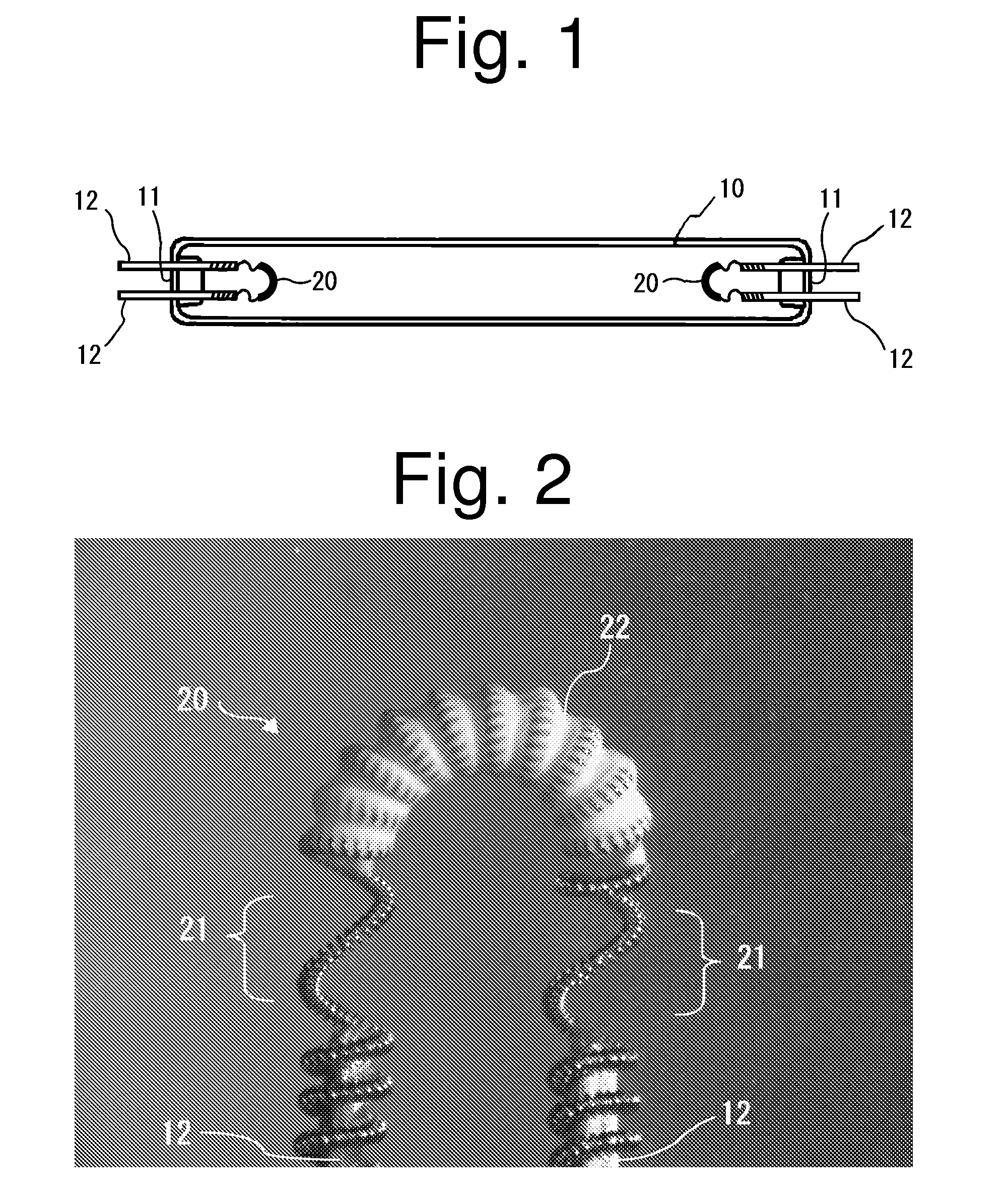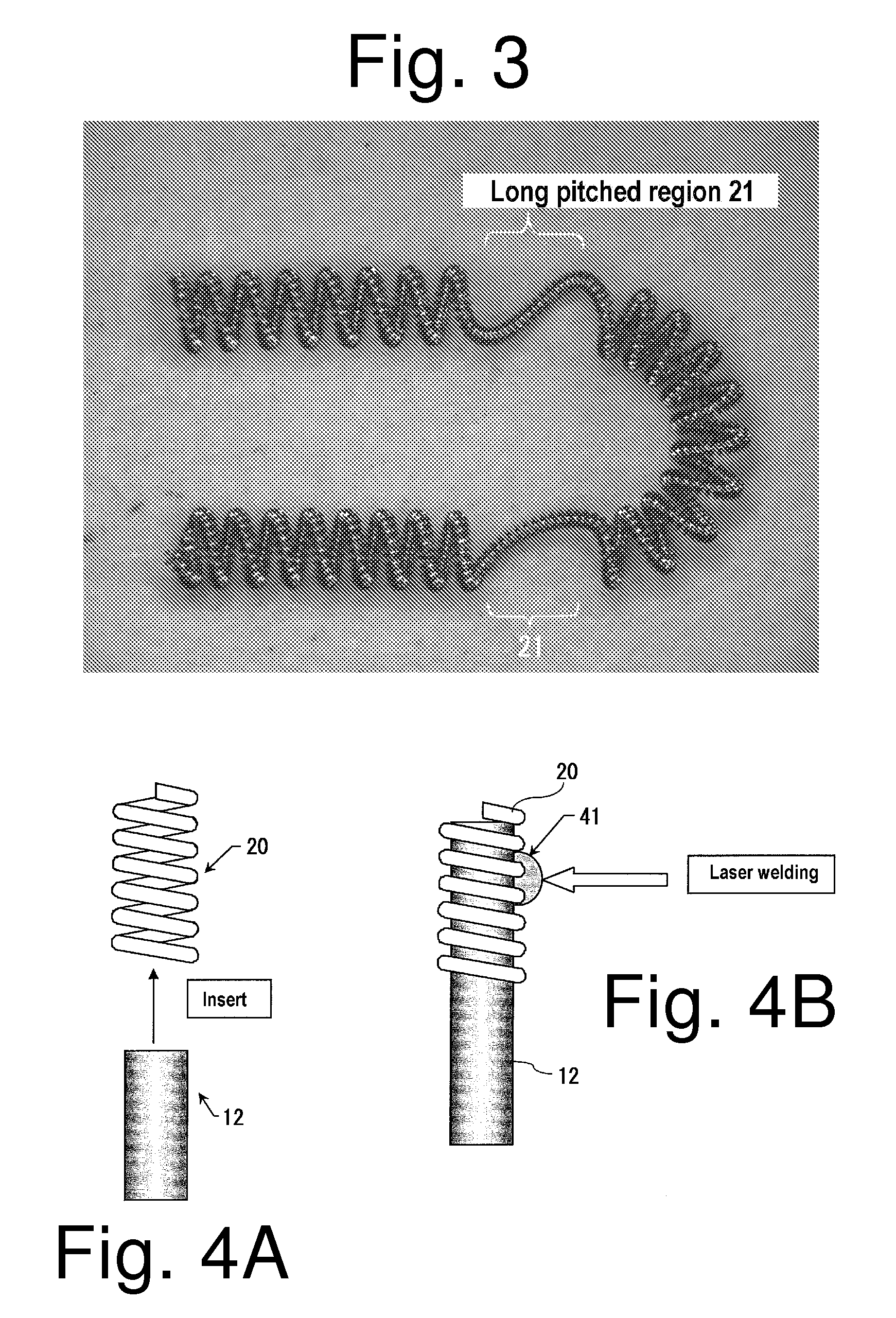Hot cathode fluorescent lamp and electrode for fluorescent lamp
a fluorescent lamp and hot cathode technology, applied in the direction of discharge tube/lamp details, discharge tube luminescnet screens, discharge tube main electrodes, etc., can solve the problems of insufficient heating and activation, possible leakage, and disadvantageous contact of coils with glass tubes inner walls, so as to achieve stable light emission characteristics, increase the amount of emitters, and prolong the life
- Summary
- Abstract
- Description
- Claims
- Application Information
AI Technical Summary
Benefits of technology
Problems solved by technology
Method used
Image
Examples
Embodiment Construction
[0036]An exemplary embodiment of a hot cathode fluorescent lamp made in accordance with principles of the presently disclosed subject matter will be described below.
[0037]FIG. 1 shows the overall structure of an exemplary hot cathode fluorescent lamp. As shown in FIG. 1, the hot cathode fluorescent lamp can include: a glass tube 10, sealing parts 11 for sealing the glass tube 10 at its opposite ends; a pair of lead wires 12 that penetrate the sealing parts 11 from the inside toward the outside of the glass tube 10; and coil filaments 20 attached to the respective tip portions of the lead wires 12 inside the glass tube 10. The sealed glass tube 10 can contain mercury and a discharge gas. The coil filaments 20 can be coated with emitter in their fixed regions as described later.
[0038]FIG. 2 is an enlarged photograph of the coil filament 20 fixed to the tip portions of the lead wires 12. FIG. 3 is an enlarged photograph of the overall structure of the coil filament 20 to which emitter ...
PUM
 Login to View More
Login to View More Abstract
Description
Claims
Application Information
 Login to View More
Login to View More - R&D
- Intellectual Property
- Life Sciences
- Materials
- Tech Scout
- Unparalleled Data Quality
- Higher Quality Content
- 60% Fewer Hallucinations
Browse by: Latest US Patents, China's latest patents, Technical Efficacy Thesaurus, Application Domain, Technology Topic, Popular Technical Reports.
© 2025 PatSnap. All rights reserved.Legal|Privacy policy|Modern Slavery Act Transparency Statement|Sitemap|About US| Contact US: help@patsnap.com



